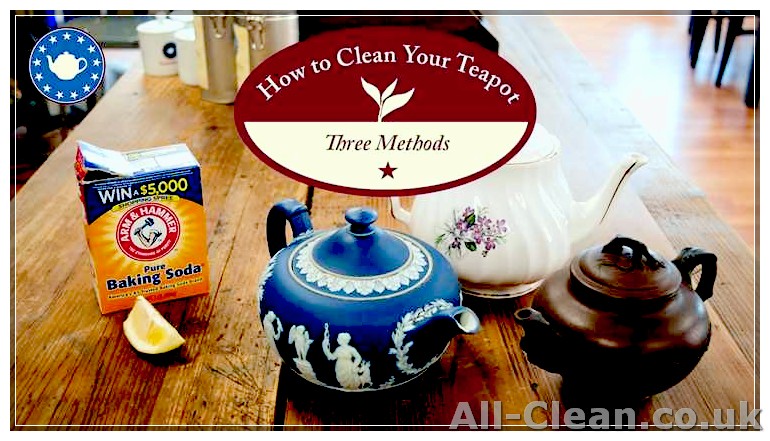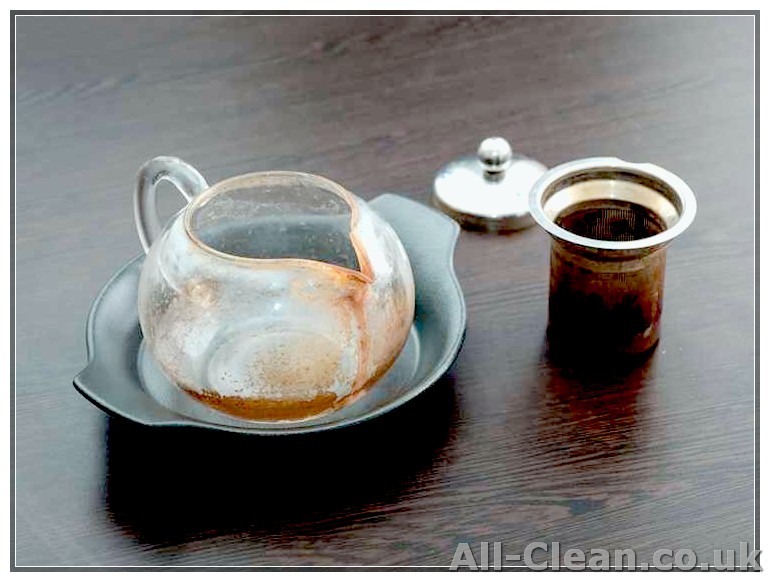
If you’re a tea lover, you know how important it is to keep your teapot clean. Over time, a teapot can develop a buildup of tea leaves, limescale, and other residues that can affect the taste of your tea. In this short tutorial, we’ll show you some easy steps to clean your teapot and keep it in good condition.
First, you should gather all the supplies you’ll need. For this cleaning process, you’ll need some hot water, dish soap or a descaling solution, a narrow brush or toothbrush, and some cleaning cloths. If your teapot is stainless steel, you may also use baking soda or vinegarlemon juice as an alternative cleaning solution.
To begin, fill your teapot with hot water and add a few drops of dish soap or the descaling solution. If you’re using the stainless steel alternative, mix some baking soda with water or vinegarlemon juice. Let the solution sit in the teapot for at least 15 minutes to allow it to loosen any buildup or limescale.
After the teapot has soaked, it’s time to scrub away the residue. Use the narrow brush or toothbrush to scrub the inside of the teapot, paying extra attention to areas where buildup is more likely to occur, such as the spout and the lid. Be sure to scrub gently to prevent any damage to your teapot.
Once you’ve finished scrubbing, rinse the teapot thoroughly with hot water to remove any residue or cleaning solution. You may also consider running the teapot through a dishwasher if it’s dishwasher-safe. If you notice any stubborn stains or limescale, you can repeat the cleaning process or use a store-bought descaling product.
Finally, wipe down the exterior of the teapot with a clean cloth to remove any dirt or fingerprints. If your teapot is stainless steel, you can use a stainless steel cleaner or a mixture of vinegar and water to restore its shine. Make sure to dry your teapot completely before storing it to prevent any moisture or mildew.
By following these easy steps, you can keep your teapot clean and in prime condition for a longer lifespan. Cleaning your teapot regularly, at least once a month, can help prevent limescale buildup and ensure that your tea always tastes fresh and flavorful. So don’t forget to include teapot cleaning in your kitchen routine and enjoy a clean and delicious cup of tea every time!
Step 1: Disassemble Your Teapot
To begin the cleaning process for your teapot, you need to disassemble it. This step is crucial to ensure that every part of your teapot is thoroughly cleaned.
Here are some tips on how to disassemble your teapot:
- Unplug your teapot from the power source, if it is an electric model.
- Allow the teapot to cool down if it was recently used for boiling water.
- Remove the lid from the teapot.
- If your teapot has a filter or infuser, remove it as well.
- Open the teapot’s spout to ensure thorough cleaning.
By disassembling your teapot, you can prevent any buildup of residue or stains in hard-to-reach areas. This step is especially important if you have a teapot with a filter or infuser since these parts can easily accumulate tea leaves or calcium deposits.
Once your teapot is disassembled, the cleaning process can begin.
Step 2: Prepare Your Cleaning Solution

Before you begin cleaning the inside of your teapot, you’ll need to prepare a cleaning solution. There are several solutions you can use to descale your teapot and remove stains, and choosing the right one will depend on the materials your teapot is made of and the level of buildup it has.
If you prefer using store-bought products, there are descaling solutions specifically designed for teapots available on the market. However, you can also make your own homemade cleaning solution using common household supplies.
Option 1: Store-bought descaling solutions

If you decide to go with a store-bought solution, make sure to read the instructions on the packaging before you begin. These products usually have specific guidelines on how much solution to use and how long it should be left to work. Follow the instructions carefully to ensure the best results.
Option 2: Homemade cleaning solution
If you prefer a more natural approach, you can use a combination of vinegar and lemon juice to descale and clean your teapot. Here’s how to make the solution:
- Fill the teapot about halfway with equal parts vinegar and water.
- Squeeze the juice of one lemon into the teapot.
- Stir the solution well to combine the ingredients.
This homemade solution is effective for removing limescale and other mineral deposits that may be present in your teapot. The acidity of the vinegar and lemon juice helps break down these deposits, leaving your teapot clean and fresh.
Note: Depending on the amount of buildup in your teapot, you may need to repeat the descaling process multiple times. For stubborn stains or heavy limescale, you can increase the amount of vinegar or lemon juice in the solution.
Now that you have your cleaning solution prepared, you’re ready to move on to the next step: Cleaning the inside of your teapot. Proceed to Step 3 to learn how to effectively clean your teapot’s interior.
Step 3: Rinse the Kettle

After you have completed the previous steps and the kettle is empty, it’s time to give it a good rinse. This step is crucial to ensure that all the cleaning agents and loosened deposits are completely removed from the interior of the teapot. Follow these instructions to make sure you rinse your teapot effectively:
- Choose the right sink: Make sure you have a sink that is clean and free from any other dishes or food particles. This will prevent any contamination and ensure a clean rinse for your teapot.
- Fill the sink with water: Fill the sink with warm water. You can also add a few drops of mild dishwashing soap if you prefer. This will help to remove any remaining residue and leave your teapot sparkling clean.
- Rinse the teapot: Submerge the teapot into the water and swish it around to make sure all areas are rinsed thoroughly. Pay extra attention to the spout and the interior surfaces where deposits may have accumulated.
- Empty the sink: Drain the sink and ensure that all the soap and residue are washed away.
- Rinse with clean water: Rinse the teapot again using clean water to remove any remaining soap or cleaning solution.
By following these steps, you will effectively rinse your teapot and remove any remnants of the cleaning process. Your teapot will be ready for its next use, and you can say goodbye to any stains or buildup that may have been causing problems.
Step 4: Scrub the Teapot

Now that you have let the teapot soak and removed any remaining stains, it’s time to give it a good scrub. This step is essential to remove any buildup or grime that may be stuck to the teapot’s surface.
Here are a few tips on how to effectively scrub your teapot:
- Choose the right scrubbing tool: A soft brush or sponge is ideal for scrubbing the teapot without causing any damage. Avoid using abrasive materials that could scratch the teapot’s surface.
- Use a mild dishwashing soap: Adding a small amount of dishwashing soap to your scrubbing tool can help remove any lingering stains or residue. However, this step is optional, and you can also use alternative homemade cleaning supplies.
- Scrub in circular motions: Start scrubbing the teapot with gentle circular motions, paying extra attention to areas with stubborn stains. Don’t forget to scrub the lid, handle, and spout as well.
- Descale with vinegar or lemon: If your teapot has stubborn mineral stains or limescale buildup, you can use vinegar or lemon to help dissolve them. Simply soak a cloth or sponge in vinegar or lemon juice and scrub the affected areas.
- Rinse thoroughly: Once you have scrubbed the teapot, make sure to rinse it thoroughly with warm water. This will remove any soap or cleaning solution residues and leave the teapot squeaky clean.
Remember, different teapot models may require specific cleaning methods or have dishwasher-safe features. Before beginning the cleaning process, it is important to consult the teapot’s manual or manufacturer’s instructions to ensure you clean it correctly.
By following these steps and implementing a regular cleaning routine, you can keep your teapot in great condition, ensuring a pleasant tea-drinking experience every time!








